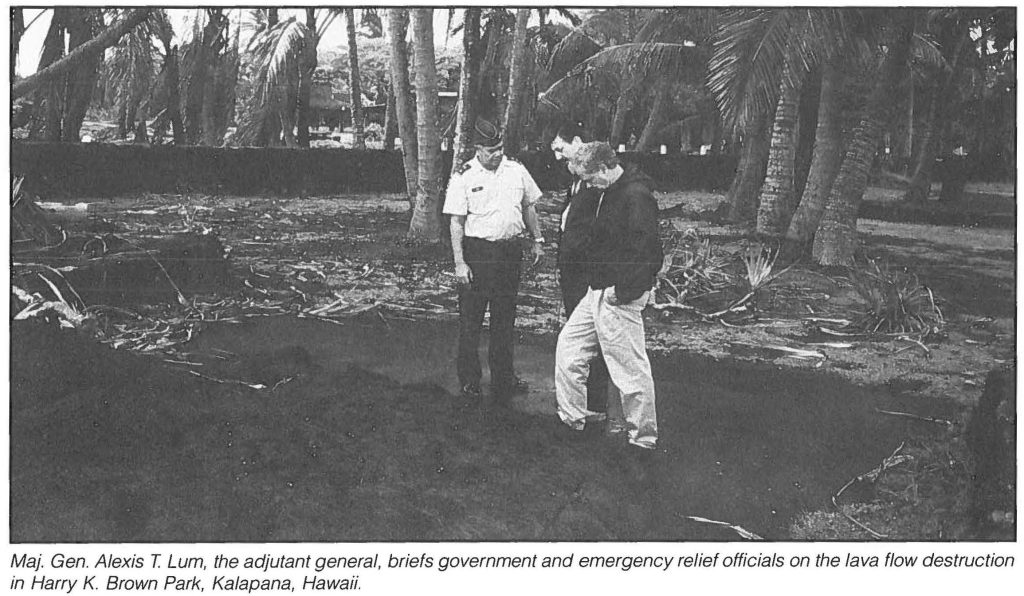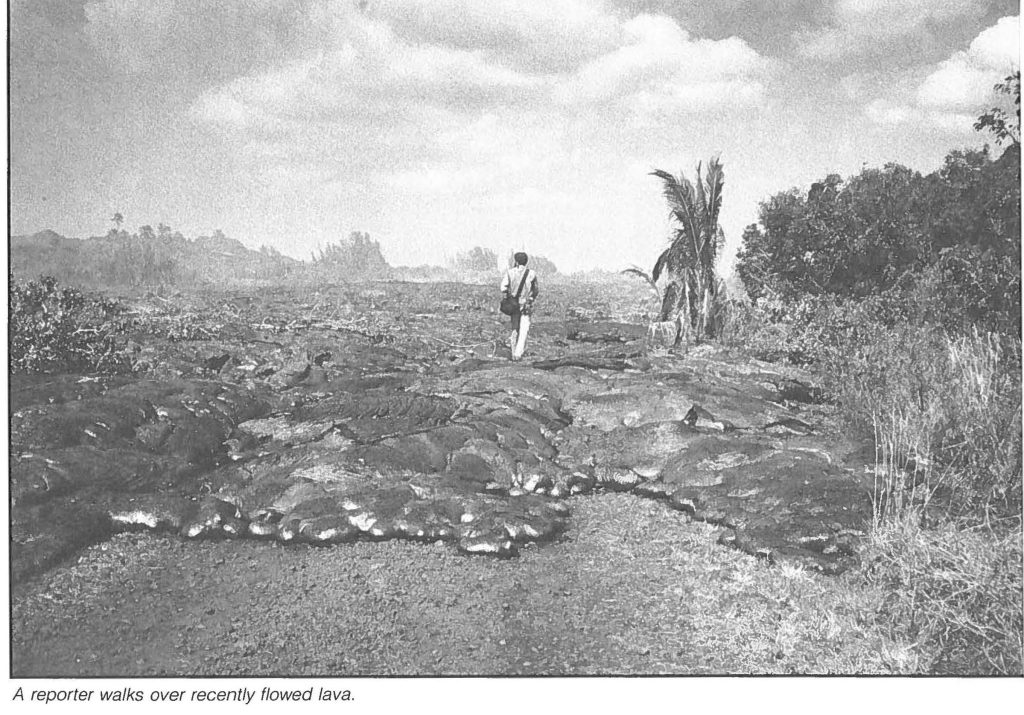1983 – 2018 Pu‘u‘ō‘ō Eruption Response
Hawaii’s periodic episodes with Madame Pele are another source of danger which constantly requires the support of the Hawaii National Guard. In early January, Hawaii Army National Guard UH-1H “Huey” helicopters stationed on the Big Island were used to transport U.S. Geological Survey teams and Civil Defense officials to Asses potential threats and determine the requirements for advanced preparation.
In February, Hawaii army National Guard soldiers, were called to state active duty to battle raging brush fires caused by hot lava flowing over dry land area.
In March Big Island Army National Guard soldiers were again called to state active service. In that call-up, Army Guard soldiers evacuated Paradise Park residents when the subdivision was threatened by huge masses of molten lava. Throughout the year, more than 130 Big island Hawaii Army National Guard soldiers were placed on active duty to assist geologist, and County Civil Defense officials mitigate the threat and disasters brought on by volcanic eruption.
– 1983 Annual Report pp.15

The Hawaii Army National Guard aviation units flew approximately 522 hours to support law enforcement
agencies and to monitor volcano lava flows. . . .On the island of Hawaii, helicopter assistance was provided to determine the threat and scope of the emergency resulting from the Mauna Loa volcano eruption in March 1984. The Hawaii Army National Guard expended a total of 43 mandays and 21.6 flying hours. The operation involved three officers,
– 1984 Annual Report pp. 9
six warrant officers, and eight enlisted personnel as pilots and crew chiefs.
State Civil Defense requirements included monitoring the increased activity of volcanoes on the island of Hawaii.
– 1985 Annual Report pp. 9
Kilauea’s Puu O’o Vent continued to remain active during the year. Dating back to January 1983, the 48th episode awakened to unleash a swath of destruction after remaining docile for nearly four years. Beginning in November 1986, rivers of lava flowing from the East Rift Zone overran homes, historical sites, and roadways in the Kalapana area, forcing residents to retreat. By the end of February 1987, lava had claimed 27 homes, severed waterlines, and cut off public roadway access. At year’s end, Puu O’o showed no signs of quieting.
– 1987 Annual Report pp. 15


Through your leadership, a Federal disaster was declared for Puna residents on the Big Island. This measure provided immediate relief and assistance for the beleaguered victims of more than seven years of seemingly relentless volcanic destruction.
– 1990 Annual Report pp. 1
Kilauea declared major disaster in 1990. Since the eruption began in 1983, lava from Kilauea’s Pu’u O’o and Kupaianaha vents has affected over 35 square miles of land in the Puna District, destroying or endangering nearly 250 residences and buildings and burying 2,500 houselots. In seven years, lava has been responsible for more than $61 million in private and public property losses. Pumping out approximately 650,000 cubic yards daily, the Kupaianaha vent continues to pose an active threat to lands adjacent to Kalapana
– 1990 Annual Report pp. 16